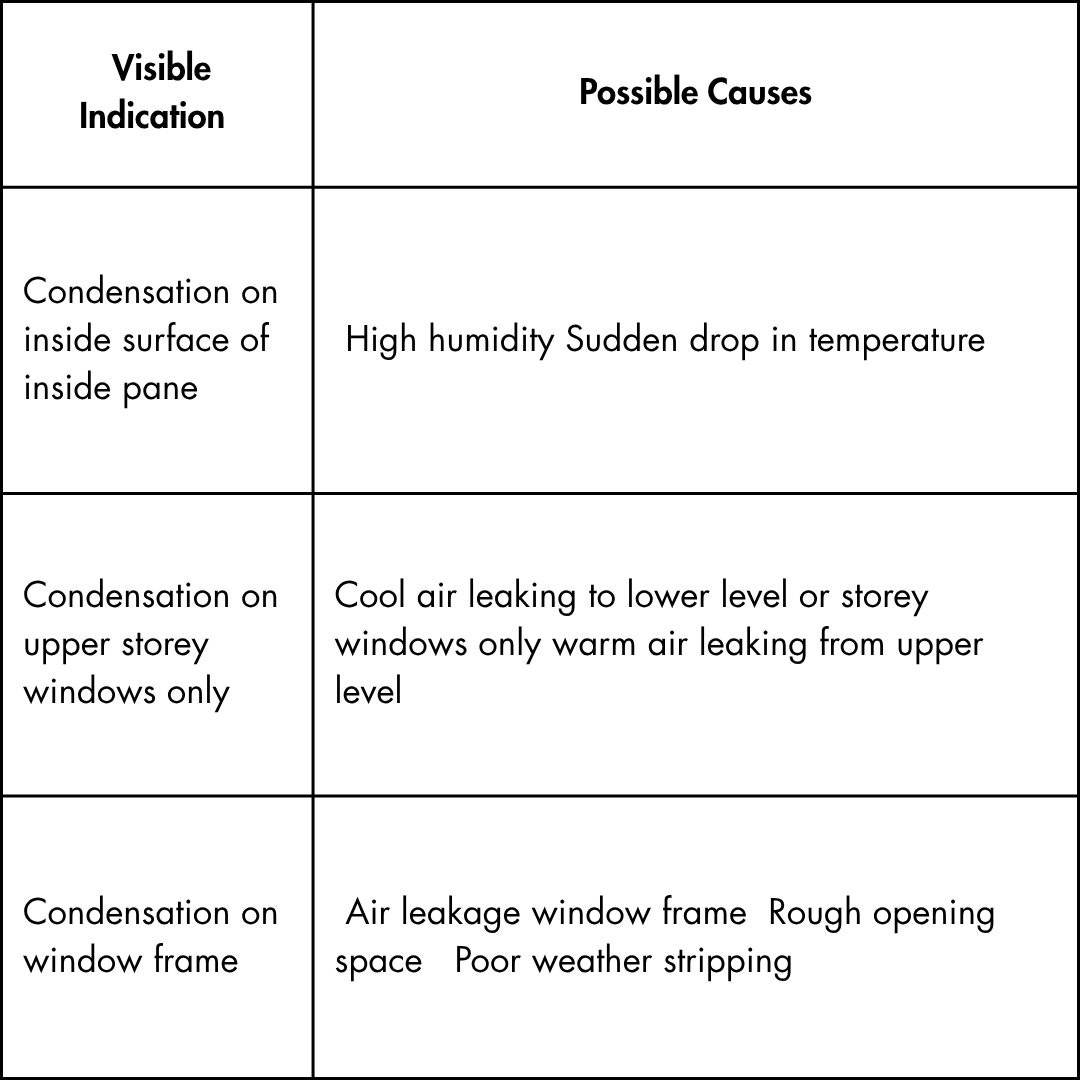.jpg)


It is important to know that windows do not cause condensation, they simply provide a visible surface for it. Here is an overview of common causes and remedies.
Condensation is the point in which moist air turns into a liquid when surface temperatures fall below the “dew point” of the room. When warm air comes into contact with a cool surface, such as a window, condensation occurs.
Above average levels of humidity in a home will result in condensation. Window glass traditionally has a low surface temperature thus producing the first signs of condensation.
Both new and older homes that do not comply with current building codes can also experience condensation in attics, inside exterior walls and within floors and ceilings.
A properly installed, new window will make your home more energy efficient, as it provides an air-tight seal. Original drafty windows commonly allow excess humidity and heat to escape, whereas your new windows provide a warmer surface for condensation to occur. Causes of condensation can include humidity levels that are too high, uneven heat distribution throughout the home and poor circulation around your new windows and doors.
Increase ventilation and control the source of excess moisture. You can mitigate humidity causing factors by performing regular maintenance, acquiring the services of a qualified inspector, installing a humidistat or by purchasing an inexpensive hygrometer that will measure the relative humidity in your home.

.png)
.png)
.png)

We can't wait to get your project started! Discover a design gallery or dealer near you.